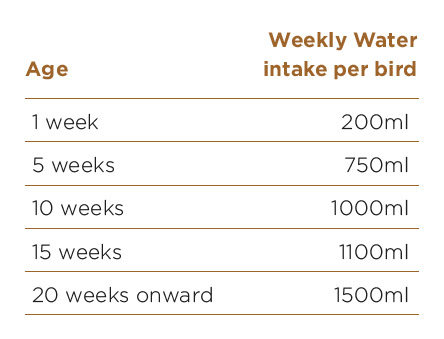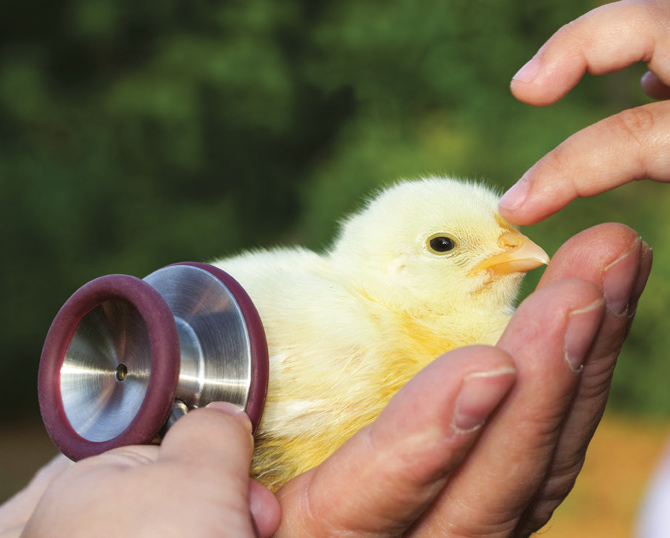KEEPING YOUR HOME FLOCK HEALTHY
Water availability
Like all living things, chickens need to stay hydrated to thrive. Easy access to fresh, clean and cool water at all times is critical, especially over the hot summer months. Pay particular attention to water temperature in summer and try to avoid black plastic containers, as they will heat up very quickly in the sun.
Use the following table as a guide to how much your chooks are likely to drink. Bear in mind that actual consumption will depend on the size of bird, level of egg production, the season and the type of drinker you’re using.
Water Quality
Water quality is commonly overlooked as an important factor in caring for backyard chickens. Your chooks’ favourite drop should be fresh and free from chemical contaminants, water-borne parasites and infectious agents. Water with a high salt content is also not good for chickens, and can cause poor shell quality and wet litter.
If you’re using surface water (dam, river or irrigation) or any water from a source that has potentially been contaminated by waterfowl and other wild birds, it must be sanitised first. Your produce store or pet-food store should have everything you need to do this.
As a rule of thumb, try to give your flock water that you’d be happy to give a person! Potable and treated tap water is absolutely fine. It’s also a good idea to keep drinking water off the ground so it stays clean and free of droppings.





